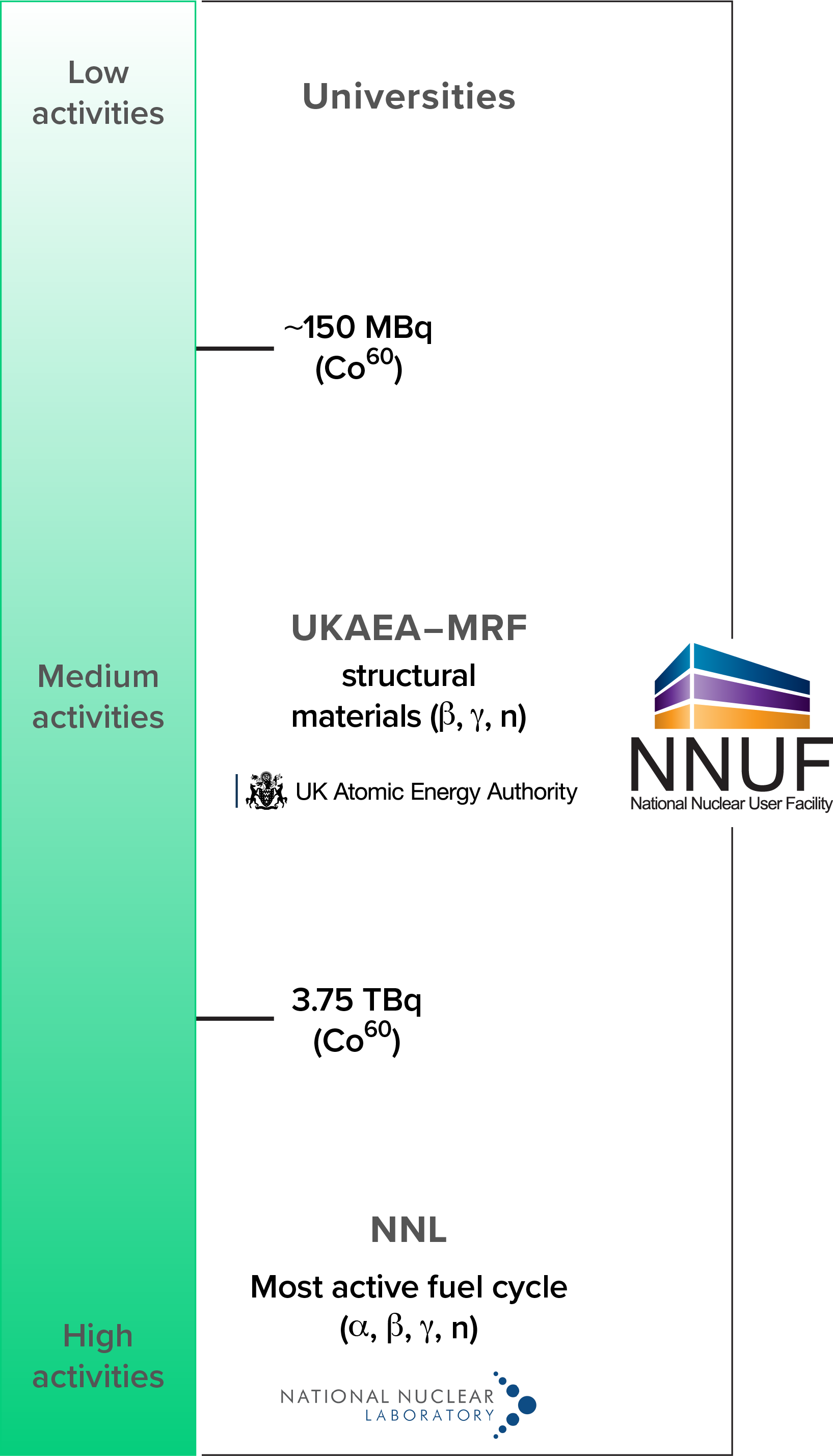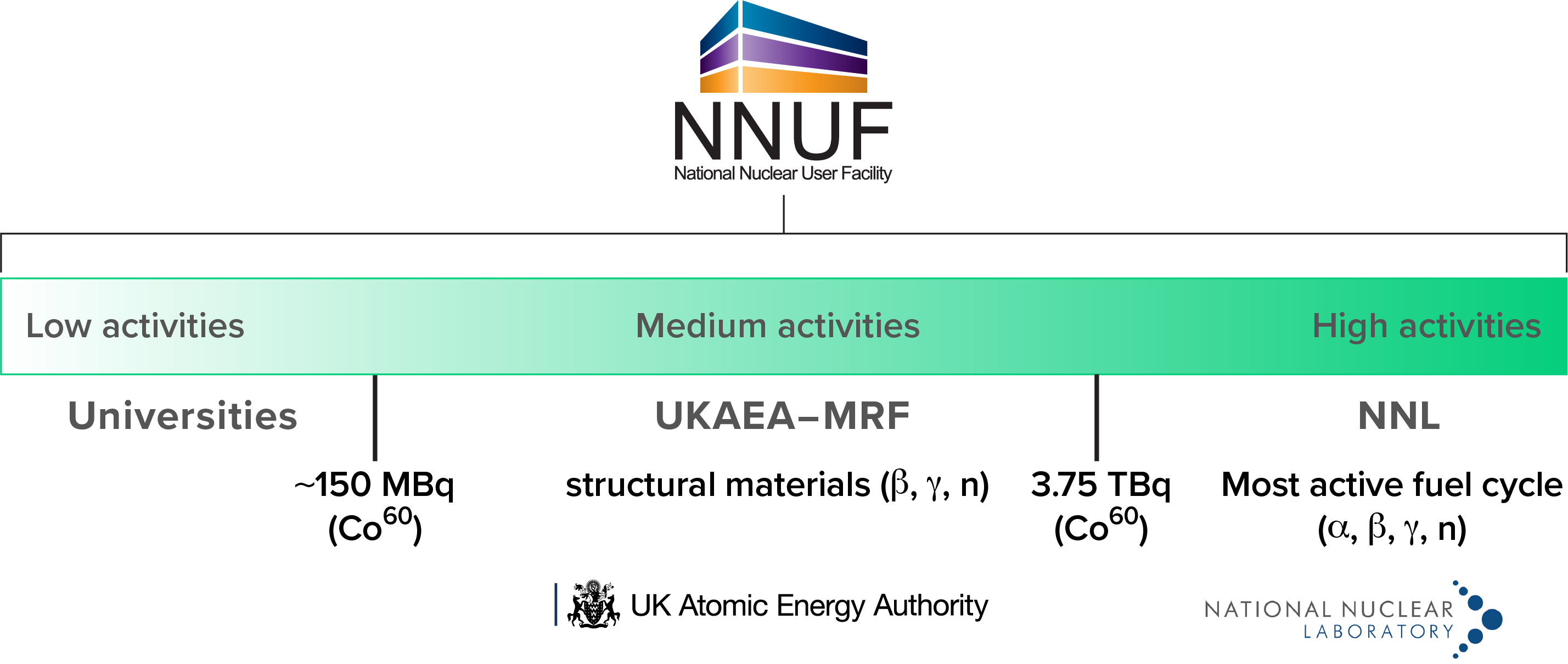Located at Culham Campus near Oxford, the MRF enables industrial and academic researchers to analyse the effects of irradiation on materials. We offer affordable, convenient access for users from fission, fusion and other research programmes – bridging the gap between university and nuclear licensed site laboratories.
The materials inside reactors face a unique combination of high temperatures and fast-moving neutrons produced by nuclear reactions. Developing materials that can survive for long periods in these conditions is therefore a high priority for the nuclear industry.
Data from the MRF is used in three main ways:
We have a range of capabilities for processing and analysing radioactive samples. We have microscopy and mechanical and thermo-physical testing equipment, with more coming online soon. We can take samples up to TeraBecquerel levels and cut these down in hot cells to much smaller specimens. These can then be used for analysis and tests either here on site in shielded enclosures or in university laboratories. There is also an experimental area for tritium, beryllium and other hazardous materials. Find out more about using the MRF and how to apply for access.


The facility was opened in May 2016 by the UK’s Minister for Universities and Science, Jo Johnson. It is part of the UK Government’s National Nuclear User Facility (NNUF) initiative. The MRF has also received investment from the Henry Royce Institute for Advanced Materials, and is an important component of its nuclear materials research theme. The Henry Royce Institute and NNUF both receive their funding from the Engineering and Physical Sciences Research Council.
MRF users include the University of Bristol, Imperial College London and the National Nuclear Laboratory.
The MRF Partners


